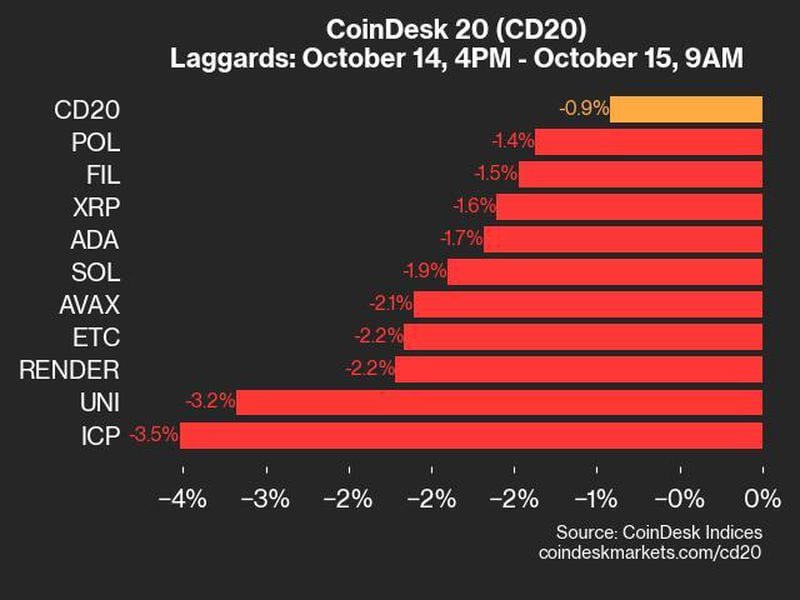How Ant’s Suspended IPO Is Related to China’s Digital Yuan
How Ant’s Suspended IPO Is Related to China’s Digital Yuan
Ant Group’s suspended initial public offering (IPO) has shed further light on a possible motivation behind China’s digital yuan. The Chinese government appears to view the payments giant as a destabilizing force to China’s economy, and the digital yuan is a way to keep companies like this in check.
Industry watchers say the People’s Bank of China (PBoC) might use the digital yuan as part of a broader effort to curb the growth of Alipay and WeChat Pay. The central bank digital currency (CBDC) could stunt Alipay’s micro-lending business and provide the unbanked with financial services, while also drawing back deposits for commercial banks.
Ant’s IPO exposes fault lines in the digital payment industry, and China’s central bank is motivated to launch the digital yuan and give itself more power to keep third-party payment platforms in check, Tanvi Ratna, CEO of fintech think tank Policy 4.0, said. Policy 4.0 has been working on an extensive research report on China’s national digital currency that will be released on Nov 18.
The Shanghai and Hong Kong stock exchanges halted Ant’s $35 billion dual IPO last week after China’s financial regulators raised concerns over Ant’s booming micro-lending business, which could add more debt to the country’s highly leveraged economy.
Ant’s co-lending subsidiary Huabei, which is a built-in virtual credit card in Alipay, facilitates loans between commercial banks and borrowers, while Jiabei is the short-term consumer loan provider. Though it enjoys as much as a 40% cut of loan interest, Alipay bears far less in credit risk than the banks. Only 2% of the loans Ant had facilitated as of June were on its balance sheet, according to its IPO prospectus.
One way for the central bank to control Alipay’s lending business is to require the company to convert cash into the digital yuan to underwrite consumer loans.
“The bank can make it more costly for digital payment platforms to use the digital yuan to lend money, and this might be something the government might want to force,” Ratna said.
One day before Ant’s IPO, China’s top financial regulators published a consultation paper to require online lenders to provide at least 30% of any loan they fund jointly with banks, making it more difficult for Ant to lend money.
Ant’s booming lending business has struck a nerve with China’s top financial regulators at a time when the country is already battling increasing default risks and weak banks. To curb fintech giants’ growing influence over the country’s economy, Beijing’s authorities proposed a new set of anti-monopolistic practices on fintech companies on Wednesday.
“China is very conscious about its debt problem. A lot of businesses do not have cash flows, especially after the coronavirus pandemic,” Ratna said. “Ant is pushing out personal loans, a lot of which could go bad.”
Alipay has not always been forthcoming in reporting its consumer lending data to Chinese banks. While Huabei and Jiebei were launched in January 2018, they did not share data with the central bank until the end of July this year, at the central bank’s request.
The digital yuan can increase financial transparency and efficiency by helping banks better track and analyze non-performing assets, Ratna said.
“For the central bank, it is very important that the underlying asset becomes the digital yuan,” she said. “It can help the bank to solve many chronic problems in the financial system, including shadow banking, non-performing loans and too much informal financing.”
Deposits leak
China’s payment giants pose other threats as well. Commercial banks in China have been losing cash deposits to non-banking payment platforms. The Chinese mobile banking market saw about $8 trillion worth of transactions in the last three months of 2019, with Alipay taking 55% of the market and WeChat Pay having 39%.
Alipay has one of the world’s largest money market funds called Yu’e Bao, which essentially is a mutual fund that usually invests in safe asset classes such as treasury bonds to earn interest that is higher than many of the saving accounts in commercial banks. Its users tend to put their in-app cash into the fund. With other similar funds on its distribution platform, Alipay had nearly $600 billion in total assets as of June.
“Loan-to-deposit ratio determines how much money a commercial bank can lend,” Aurora Wong, vice president of crypto firm ZB Group, said. “More cash deposits enable the banks to lend more, which is one of the most lucrative businesses by earning interest.”
China’s commercial banks need to maintain or raise their deposit base to keep up with lending, especially when the economic slowdown deepens.
Some of the commercial banks in China hope retail depositors will use the digital yuan in their payment transactions. When the users convert the virtual currency back to fiat, the cash will remain in the bank accounts instead of on mobile payment apps.
The latest attempt to encourage mass adoption of the digital yuan was a $1.5 million giveaway by PBOC in October for Shenzhen citizens, Wong said.
Each of the 50,000 participants, who downloaded the digital wallet, would be selected in a lottery to receive about $30 during the week-long campaign. Stores in Shenzhen posted the QR code for the wallet users to scan and pay for their purchases.
The digital yuan’s benefits for China’s commercial banks go beyond increasing cash deposits. With a larger user base, the banks will have more transaction data to profile consumers, analyze their online behavior and experiment with different ways to monetize the data.
“Commercial banks in China are becoming more similar to fintech companies,” Wong said. “I think this won’t be the last virtual currency giveaway and there will be even more programs to incentivize consumers to use the wallets from commercial banks.”
Mass adoption
Still, Alipay and WeChat Pay are standing in the way of the digital yuan’s mass adoption. During last month’s trial giveaway, some shoppers preferred to use these two mobile payment apps because they are more convenient.
“The question of adoption is a difficult one for central banks,” Ratna said. “This is the bread and butter for a startup but it is not something that the central banks have experienced.”
Favorable regulatory policies for the digital yuan, unique technical features that enable the unbanked to access basic financial services and improving user experience for native digital wallets are among the most likely ways to increase mass adoption for the digital yuan.
One technical feature that sets the digital yuan apart from Alipay in terms of payment is that users do not need a bank account to be linked to a mobile app in order to do cash transactions.
China has more than 225 million people without a bank account, which is one of the largest unbanked populations in the world, according to a 2017 report from Global Findex.
The digital yuan account has a sliding scale of Know-Your-Customer (KYC) requirements corresponding to the amount of digital yuan you want to own and use, said Chuanwei Zou, chief economist of blockchain infrastructure firm PlatOn, said.
“The more identity information you register with the digital yuan wallet, the more digital yuan you can have in the wallet,” Zou said.
For Alipay and WeChat Pay, their users have to register with their bank accounts, which requires a government-issued ID. The app will also use facial recognition and cell phone numbers to verify identities.
Users only with an equivalent of a few thousand dollars in their digital yuan wallets could remain fully anonymous, which would be beneficial to many small retail depositors in China, Zou said.
The decoupling from a bank account also helps foreigners in China and those who have the demand for renminbi transactions outside the country. The central bank plans to launch a trial during the Beijing Winter Olympic Games in 2022, where foreigners in China can directly exchange other fiat currencies for the digital yuan without carrying cash or opening a bank account.
The digital yuan enables foreigners to buy goods and services in China, and allows anyone outside China to transfer funds across borders, without using a bank account since the virtual currency will be part of a closed system managed by PBOC, Zou said.
“The digital yuan will definitely change the market structure of digital payment in terms of the last-mile adoption,” Zou said. “We already have commercial banks’ mobile apps, Alipay and WeChat Pay and there would probably be a native app for the virtual currency, which can be a standalone app but can also be integrated into third-party payment apps.”
China’s four major commercial banks have included the digital yuan account in their mobile apps, while the central bank has yet to let Alipay and WeChat Pay integrate the digital yuan as a payment option in their apps.
Like many other significant policy changes, the Chinese government has been approaching its national virtual currency initiative in a trial-and-error fashion, Ratna said.
“The central bank has not really played all its cards yet,” she said.









